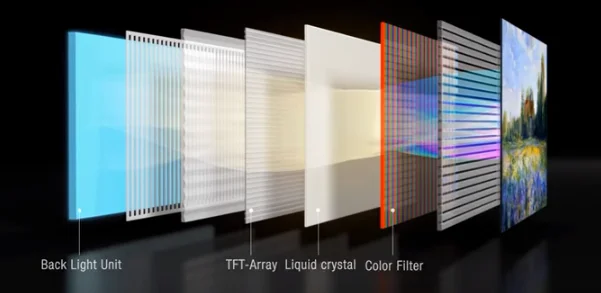Dimmer technology, turning off the backlighting in part of the screen, appeared when LCD TVs began to use LED backlighting for the display instead of lamps, this happened sometime in 2010. Manufacturers began to come up with different commercial names for backlighting technologies, for example, LG used the commercial names Edge Lit, Full Array and Direct Lit for local dimming of LED TV screens. But for OLED TVs, names like Pixel Dimming and Pixel Level Dimming are used.
What is pixel level dimming on OLED TVs
Pixel Dimming technology only applies to OLED displays. Speaking of LG, LG first used Pixel Dimming, but then Pixel Level Dimming appeared in some OLED TV models. This means that the backlighting is controlled at the pixel level.
Pixel Dimming vs Pixel Level Dimming OLED TV
Pixel Level Dimming and Pixel Dimming are different names for the same system, there is no difference between them. In any case, you should know that it’s not a technology, it’s just a marketing name. It’s a name LG came up with to increase sales. Agree, it sounds nice that an OLED TV has pixel-level brightness control, that is, at least 8 million brightness control zones. But in reality OLED TVs have no backlighting, so there can be no brightness adjustment zones. Why the name Pixel Level Dimming appeared, the answer is simple, time goes by to talk about new technologies, so Pixel Level Dimming appeared.
How does Pixel Level Dimming work?
LG’s OLED TVs have no backlighting, this is a feature of OLED displays, they emit light themselves. So we can assume that backlighting can work at the pixel level. But you should know that an OLED TV works without local dimming; OLED displays can’t use local dimming because it doesn’t exist. Yes, of course, you can assume that in OLED displays you can turn off the pixels and it will be dimming, but in reality they don’t do that. The pixel glows with the intensity that is embedded in the encoding of the digital frame. If you want to show black, the pixel just doesn’t emit light, it’s true black, which requires no amplification whatsoever.
On the part of manufacturers, this is just a publicity stunt, geared more toward the psychology of the buyer. For example, if a buyer is considering purchasing a Series 8 TV with a NanoCell screen, the specs indicate the presence of local dimming. If the buyer is considering an OLED TV and the specs do not specify local dimming. The buyer believes that the OLED TV has less technical capability. Thus, local dimming at the pixel level was invented for advertising purposes.







